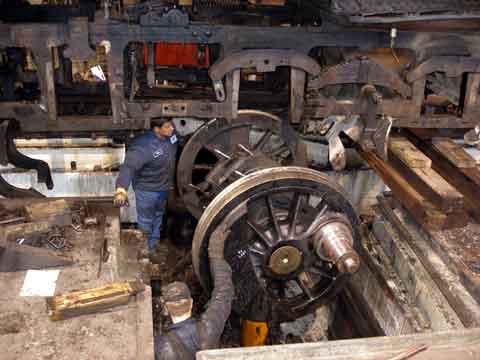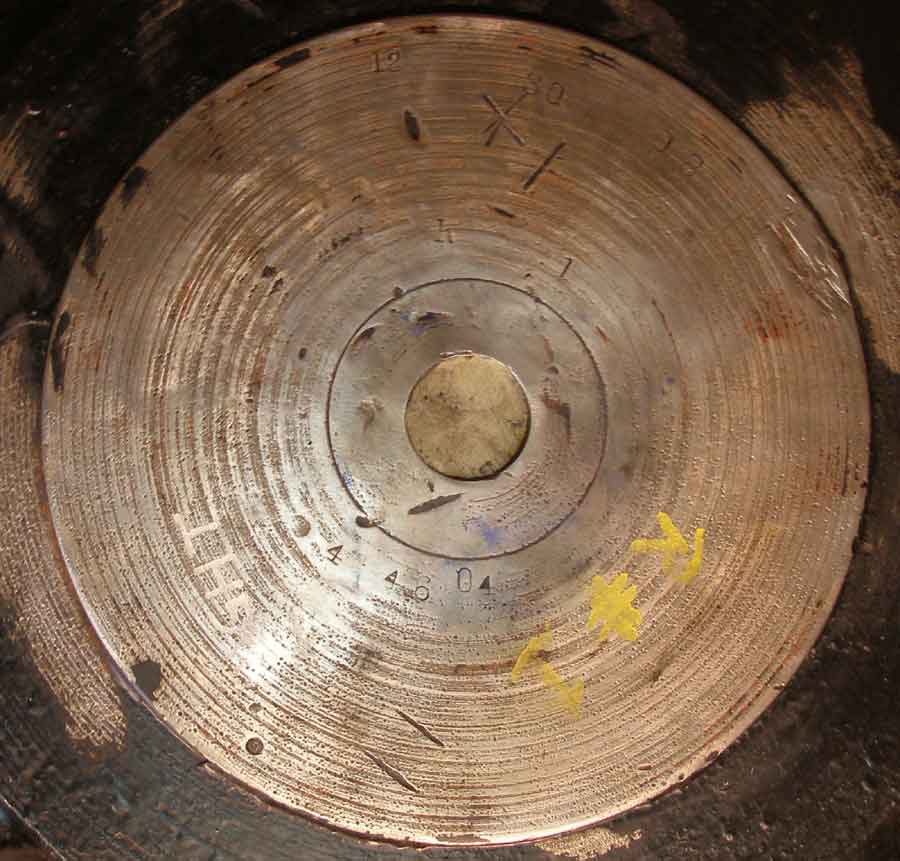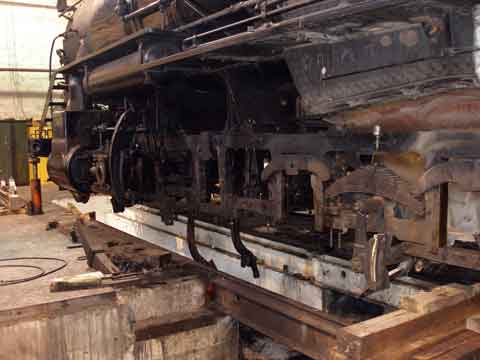I think it’s safe to say that it is never boring around the museum. Of course, the big news is that both of our steam locomotives are down because of cracks in the driving axles. But we must not overlook the fact that before the cracks were discovered, we had locomotive 40 in service in time for the first photo shoot in February.
Locomotive 40 was taken out of service last October due to problems with its four-wheel pilot truck. The pilot truck leads the drivers around curves and if there is one thing we have a lot of it’s curves on this railroad. Without it, the drivers don’t stay on the tracks around corners all that well.
The main problem with the pilot truck was that the casting, which transmitted the motion from the truck to the locomotive, was failing. The repair would require a new casting and in order to make a casting you need a pattern. Normally a pattern is made out of wood; we didn’t have one and in our case, having a new pattern fabricated would have cost thousands of dollars. Adding insult to injury, it would not be needed again for another fifty years, and chances are that in fifty years no one would know where the pattern was to be found.
After some head scratching and consulting with the foundry contracted to do that casting, it was decided to make a one-use pattern out of insulation foam. Using a resistor wire from an old heater, the pattern was cut out of foam, glued together, and sent off to the foundry. The temporary pattern worked just as it should and the casting of the new bowl was a success. But the work didn’t end there: The new casting’s bearing surfaces needed to be machined to a final fit. Then, supporting the cast iron bowl are four links that we nicknamed dog bones and since we had a new bowl and examination of the dog bones revealed cracks, it was decided to manufacture new dog bones. After that was accomplished and more machining undertaken in order to create new pins, the entire assembly was put together and tested. Of course, the only way to test is to fire up the locomotive and take it around some curves. The test was a success and 40 was the star of the first photo shoot. Now the pilot truck is doing what it was intended to do—guide the drivers around the curves. This repair of the pilot truck should last for decades. One problem corrected, only to find those cracks in the axles.
After discovering cracks in the axles of both locomotives 93 and 40, it was decided to repair locomotive 93 first. It was also decided that the repairs to both locomotives would be long-term. Our goal is to do a complete rebuilding of both steam locomotives’ running gear. It will be expensive; estimated repairs are $200,000 per locomotive, but once completed, they will address the long-term needs of both locomotives, assuring us of years of service.



If you look closely at the center photo, you can see the axle date: 12-30-08. Ninety-nine years worth of service.
On February 28th, the repair process started on locomotive 93. Staff and volunteers, with assistance from the Heber Valley Railroad, removed all four driver sets from locomotive 93. There are no two ways about it—this was quite the task. With each driver set weighing thousands of pounds, the work had to be done very carefully. Each set was lowered using the drop pit jack. Our locomotive is normally a 2-8-0 but it’s been sitting in the shop as a 2-6-0 after driver set number 2 was removed for the original repair job. Next, driver set 1 was removed; now 93 was a 2-4-0. Then driver set 4 was taken down and 93 became a 2-2-0. Finally, driver set 3 came down, the pilot truck was tied up, and 93 is now a 0-0-0. It is very surrealistic, seeing 93 float above the pit with no drivers and no wheels touching the track.
Now that all of the drivers are out of the locomotive, the next step is to evaluate every component and develop the scope of work required based on the condition of these components. Some parts will be replaced, some will be rehabilitated, and a rare few will just need cleaning.
Meanwhile, on the building front, a lot of work is continuing to move ahead. The biggest news is the completion of the conversion of the boiler building into restrooms. This project took an eyesore and converted into a much-needed resource – no more porta-potties!
Other work took place in the enginehouse. Work continued on the floor drainage system with the system cleaned out and a grease trap and sump pumps installed. Electrical system work continued with a new transformer installed and new ceiling lights going up.
Next to the enginehouse, the paint shop (or coach shop) also received a new electrical system. With power restored, this makes it much easier for restoration work to be done on this building. Work continues on the McGill Depot, too. The building has been stabilized, the building envelope is sealed against dust and moisture, and all of the doors and windows in the building are covered. Previously, the building had received a new roof. With decay arrested, we can move forward when funding is available and restore the building for future use.
On the track front, hundreds of ties were installed on the Keystone branch by a contractor very late last fall. Work has been ongoing this winter to develop an RFP (Request For Proposals; it’s how we are required by law to contract out work) for additional work on both branches—Keystone and Adverse. Money for this project is coming from the State of Nevada out of federal funding which was obtained by our congressional delegation.
It may be winter outside, but much work is ongoing as we prepare for the start of the new season, which is only six weeks away.

